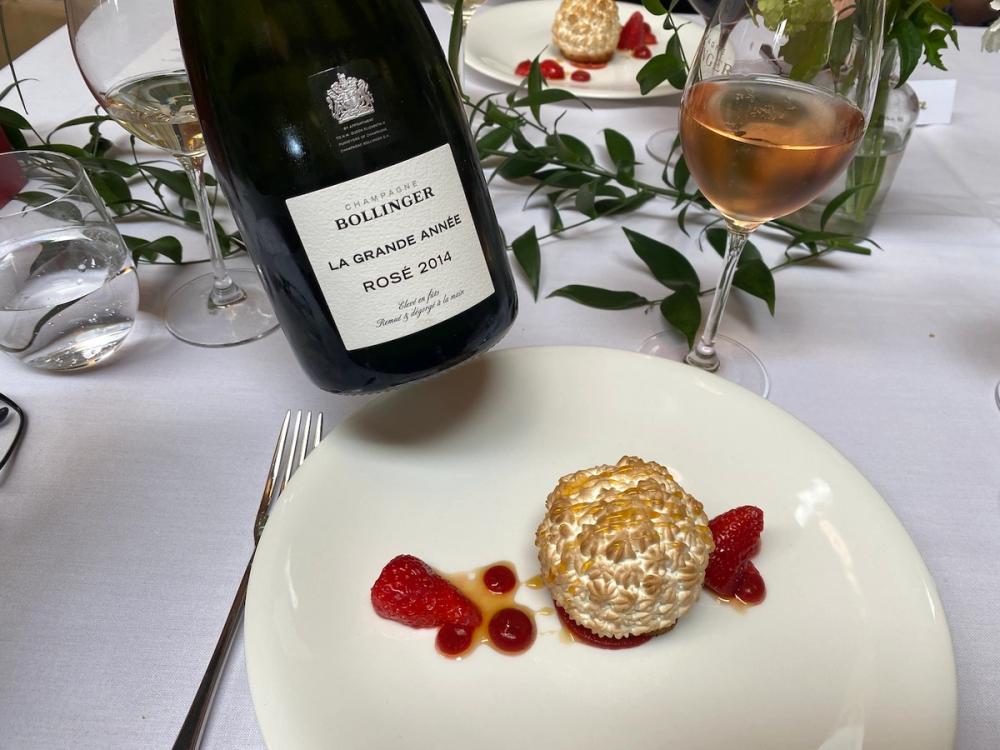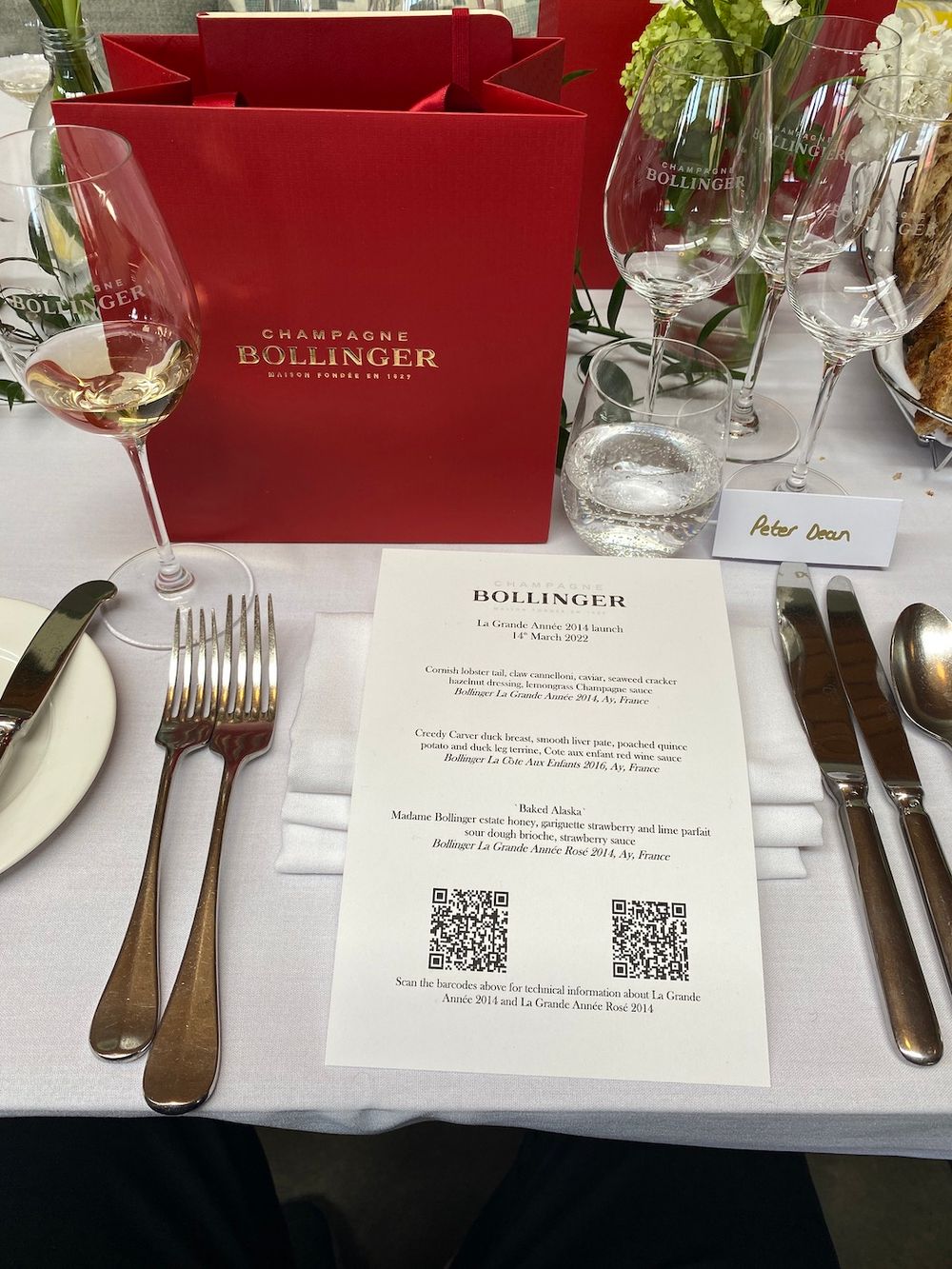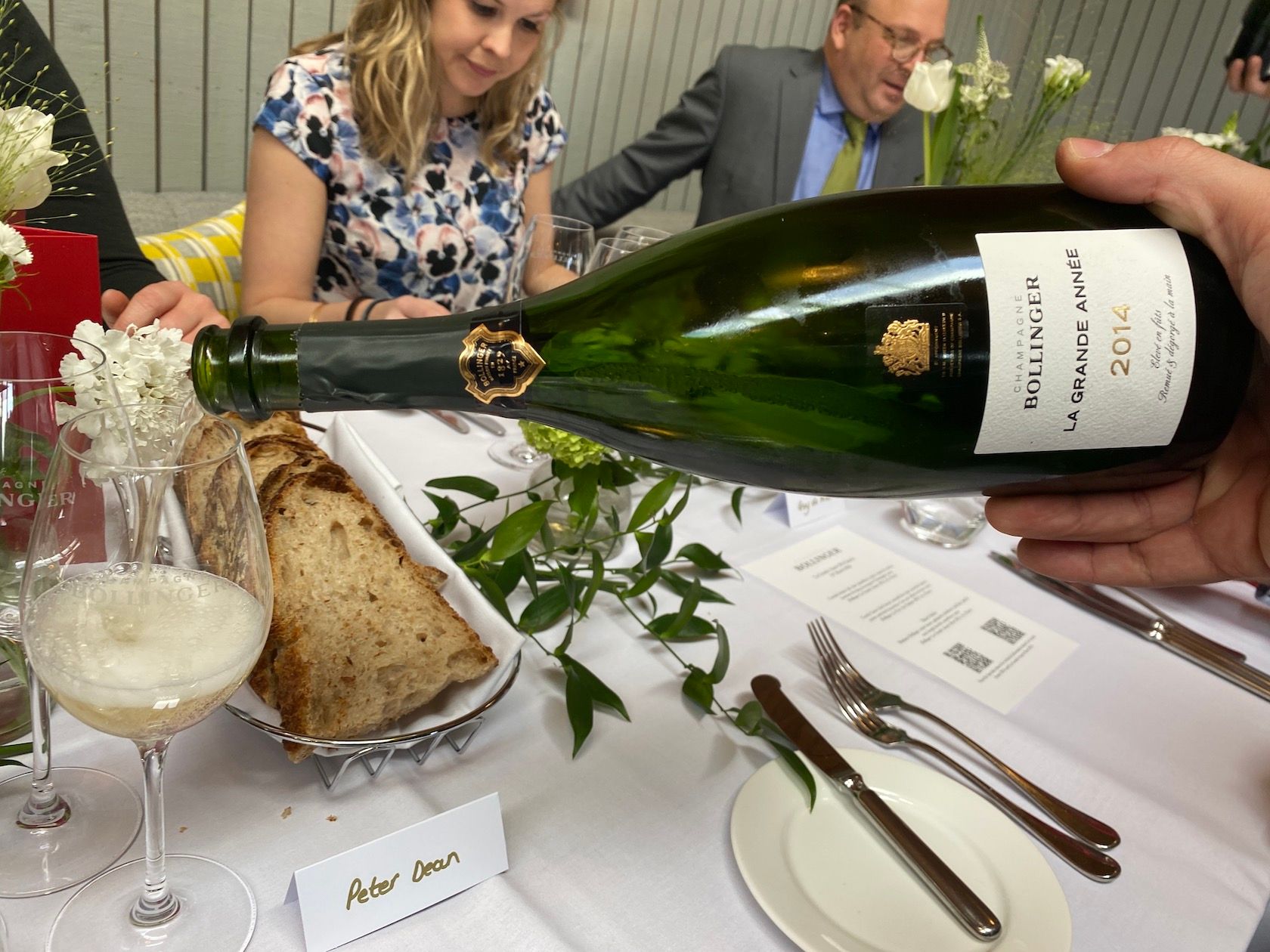“The difficulty of the 2014 vintage really is nowhere to be seen.”
It’s becoming increasingly common to hear about how difficult a growing season is in Champagne. “Wettest”, “Hottest” “Coldest” “Earliest” – these comparative adjectives preface every vintage declaration. But with the increasing skill of the growers and chefs des caves the Champenois seem to be managing to ride out the vicissitudes of climate change. For the time being at least.

Charles-Armand de Belenet, Woodspeen, March 14, 2022
Before the official launch of La Grande Année 2014 and La Grande Année Rosé 2014, Champagne Bollinger MD Charles-Armand de Belenet said “2014 was one of the most difficult years ever,” to the guests invited to the Michelin-starred Woodspeen restaurant in Newbury.
Deputy chef de caves Denis Bunner (who is leading the line throughout Gilles Descôtes’ continuing illness) elaborated by saying that “It was a tough year in terms of contrasts, we had rain in July and it was cold in August.” Prior to that the Bollinger team had to contend with two scorching months, including a June that was the sunniest in 50 years, followed by the wet and the cold summer. The weather finally relented in September which was fine, enabling the fruit to be harvested in record-quick time – nine days from the start of harvest on September 15 compared to the customary fortnight.
But you wouldn’t have known. Tasting the two Grande Année wines that had spent seven years on lees under cork, the vagaries of the weather during the growing season have only helped create two classic, vinous wines. The cold summer can be felt in the overriding freshness in the wines, which has also accentuated the minerality – chalky, saline and iodine notes – or, as Bunner puts it, “the print of the terroir… the Grands Crus and Premier Crus chalky subsoil.” The barrel vinification and ageing only serving to further reveal the character of the terroir.

De Belenet emphasised that the Grande Années are handmade ‘artisanal’ products before we tasted the wines with a pairing menu created by Woodspeen executive chef, Peter Eaton – the La Grande Année 2014 paired with a lobster dish, the La Grande Année Rosé 2014 with a strawberry baked Alaska and the still red Pinot Noir La Côte Aux Enfants 2016, which makes up 5% of the final blend of the Rosé, served with duck breast.
De Belenet introduced the still Pinot by saying that its power means that where Champagne Houses normally use 15-20% of red wine for the final rosé blend Bollinger only has to use 5%.
So how was La Grande Année 2014 tasting?

The difficulty of the 2014 vintage really is nowhere to be seen. The ripeness of the fruit is in delightful balance with the acidity creating a classic, intense Grande Année that not only has ‘all its ducks in a row’ component-wise but is also blessed with an overreaching freshness that makes for superb drinking now and augurs well for lengthy cellaring. In the same way that 2014 has delivered white wines of exceptional purity in Burgundy, so the La Grande Année 2014 is classic to its core.
Medium gold with a fine, steady bead, the nose offers up clean, fresh citrus, Mirabelle plum, orchard fruits with a sea-spray freshness and lick of cream. Complexity develops as more savoury notes unfurl from the wine – fresh hazelnuts, toasted almonds. The attack is well measured, voluminous at first, with vinous intensity and density, becoming more textural. And all the time that chalky freshness hits your palate as pixilated flavours of orchard fruits, quince and citrus, mix with saline and a hint of iodine on the finish. It’s quite breathtaking.
61% Pinot Noir, 39% Chardonnay
19 crus: Mainly Aÿ and Verzenay for the Pinot Noir, Chouilly and Oiry for the Chardonnay
Dosage: 8 grams per litre
So how was La Grande Année Rosé 2014 tasting?

The 2014 is a slight departure in its intensity and fruitiness, but it is a magnificent wine make no mistake. The colour is a sumptuous salmon pink threaded with a fine bead of bubbles. It is phenolic with bright, small-berried red fruit, teasing you into the glass – wild strawberries, raspberries, morello cherry, a hint of fruit syrup. The attack has volume and a fruity voluptuousness, the texture then caresses the mid-palate before a tight, dry, long, fruits-of-the-forest sorbet finish. It’s quite a journey undertaken with exceptional balance between the pretty, detailed fruit and mineral-driven acidity.
63% Pinot Noir, 37% Chardonnay
5% red wine Côte aux Enfants
19 crus: Mainly Aÿ and Verzenay for the Pinot Noir, Chouilly and Oiry for the Chardonnay.
Dosage: 8 grams per litre
The La Grande Année 2014 is now available in the UK through Mentzendorff with an RRP of £125. The La Grande Année Rosé 2014 will be released later this year with an RRP of £150.

That lunch menu in full
Mentzendorff is a supplier partner of The Buyer. In order to discover more about them click here.










































